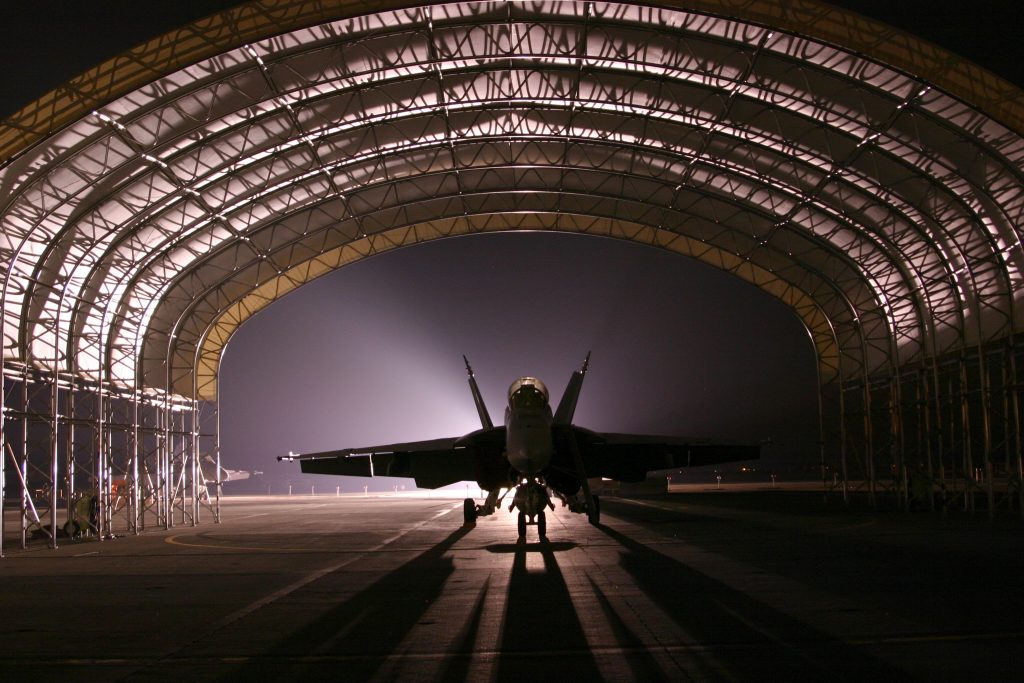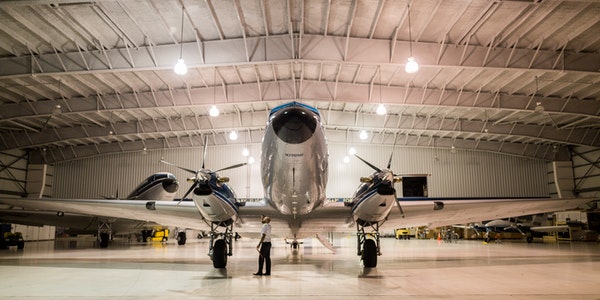Hangar Design Requirements
All the design of the hangar must take into account the local climatic conditions and biological activities. In any case,
the safety of the aircraft and related personnel must be ensured. The hangar needs to have the temperature and environmental conditions for the mechanics to safely and comfortably complete the mechanics service business throughout the year.
The interior lighting design of the hangar must meet the requirements of machine repair, and the hangar design must ensure that it does not endanger human health and safe working conditions.
- The Basic Structure of the Hangar
1.1 The basic structure design of the hangar must be designed by a qualified design unit, and the construction unit must also need a qualified enterprise to construct,
1.2 The materials used in the hangar must meet the design requirements and pass inspections, and the production enterprises also need corresponding production qualifications,
1.3 The basic structure of the hangar should isolate the outside from the inside, and the climatic factors such as cold and hot temperature, wind speed, rain and snow should be measured on site,
1.4 The design of the hangar should choose materials with strong isolation ability, fire and cold resistance.
2. Lighting design
2.1 The hangar requires natural light,
2.2 Install safe and reliable electric lights without heat on the ceiling of the hangar,
2.3 The illuminance of the hangar lights reaches 400lux per square meter,
- Insulation
3.1 The heating of the hangar must have a blowing hot air system;
3.2 At minus 30 degrees in winter, the hangar door opens and closes, and the working environment temperature needs to reach +18 degrees hot air system within 40 minutes,
3.3 The temperature blown by the hot air blower is not more than +55℃,
3.4 The overall normal temperature of the hangar is between +14~+18℃,
- Power supply part
4.1 Two power supplies are required,
4.2 There must be an emergency backup power source,
4.3 Ground lights must be provided at the airport where the aircraft stops,
4.4 The ground lamp circuit must have waterproof measures and must be able to withstand great pressure,
5. The cold water and sewage systems should be connected to the urban pipeline system,
- Fire Fighting System
6.1 Install fire protection system,
6.2 Equipped with fire hydrants and various types of fire extinguishers (fire extinguishers with foam spraying are required),
6.3 Emergency escape exits should be designed.
- Grounding lightning protection facilities
7.1 The hangar must have lightning protection equipment,
7.2 At least 2 lightning protection facilities at the parking airport.
8. The high-voltage electric system and maintenance of the hangar require high-voltage, so a high-voltage production system must be configured.
- Hangar door
9.1 The hangar door needs to meet the door opening design requirements of the hangar, and use flexible doors or steel translational hangar doors according to the design,
9.2 The hangar door needs to meet the functions of wind resistance, rain and snow,
9.3 The hangar door needs to be equipped with manual opening function for special use.
10.The floor needs to be equipped with a reinforced concrete structure that can withstand 1,000,000 kilograms in line with the movement of heavy machinery, the floor uses anti-slip paint,
- Design 4 emergency exits and set up road signs
Hangar Lighting Standards
In recent years, the world’s economy has maintained a high-speed development trend, while the total energy consumption has increased sharply, the energy efficiency is still at the international backward level. Therefore, countries all over the world put forward the basic national policy of energy conservation. With the development of civil aviation business, more and more maintenance services are carried out. Many airlines have increased the investment in maintenance facilities and maintenance equipment. How about Reasonable use of electrical energy-saving technology, to achieve energy conservation and emission reduction, to save operating costs of enterprises, to enhance the competitiveness of enterprises, is a problem that needs to be deeply considered.
Reasonable selection of lighting fixtures is an important direction to promote energy saving: maintenance hangar is generally composed of hangar hall and annex building, maintenance hall is the place for parking and maintenance of aircraft, and auxiliary building mainly includes power facilities and various maintenance workshops. Hangar span is large, the area is large, the height is generally more than 20 meters, the quality of lighting, illumination, light efficiency requirements are also relatively high.
Depending on the maintenance process, the illuminance of the hangar and auxiliary building maintenance workshop is generally 300-500 lux, and the illuminance of the office and other rooms is 300 lux. In other places, according to the GB 50034-2013 architectural lighting standard, the lighting power density of each place is limited to the target value under the condition of meeting the lighting requirements.
Lighting level required for aircraft maintenance
Vision:
Vision can be improved by increasing the light level of the aircraft hangar, but only to a certain extent, because the law of diminishing returns is at work. Excessive lighting may cause glare. According to IECSI (1995), direct, centralized lighting is the general lighting recommended for aircraft hangars. In aircraft maintenance, the specular reflection of the aircraft structure will cause glare, so low-brightness LED lights should be installed. When interior work or shadows around the aircraft cause low illumination, additional supplemental lighting is usually required.
Color rendering index
The color rendering index is very important in certain maintenance tasks. Therefore, the true reproduction requirements of colors must be considered. For example, many wires are color-coded so they can be connected and traced correctly. The color of an object is determined by the color content of the light falling on or produced by the object. In fact, the color we see when we look at an object is the color that remains after the object has absorbed all the colors to be absorbed. Different types of light sources are composed of different colors. For example, a red car illuminated by a high-pressure sodium lamp in a parking lot, and a bright red car in the sun looks orange under the sodium lamp because there is almost no red in the spectrum of the high-pressure sodium lamp.


